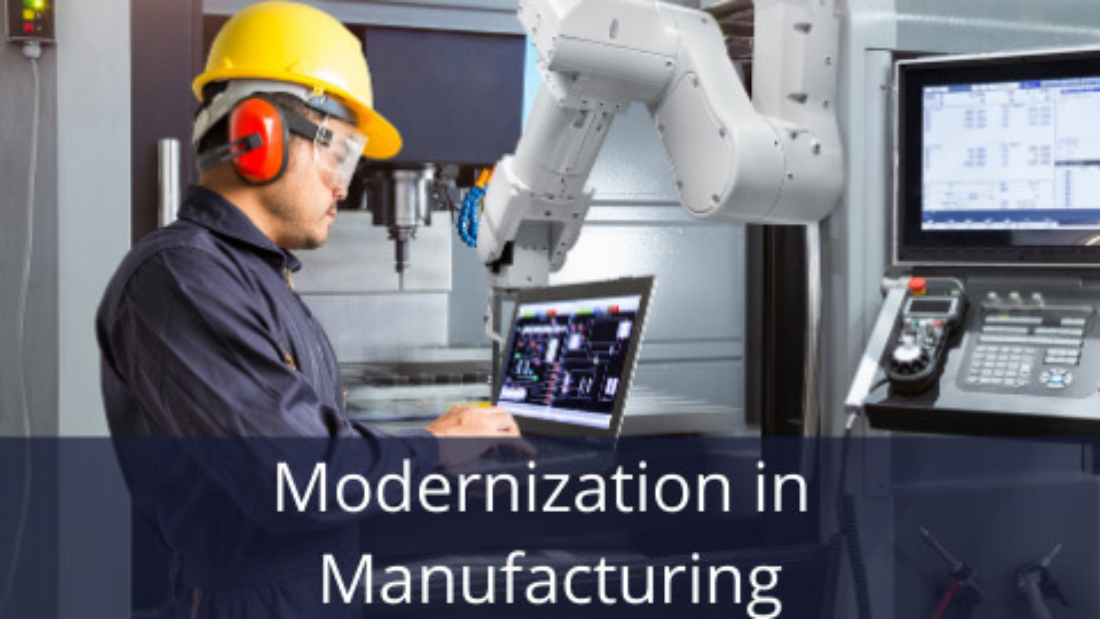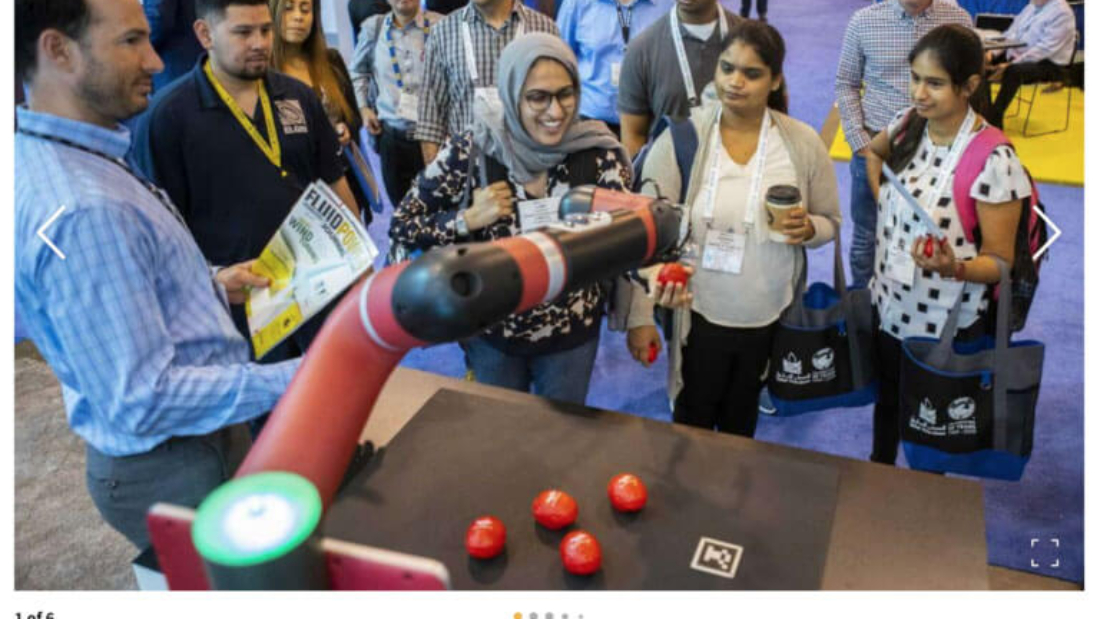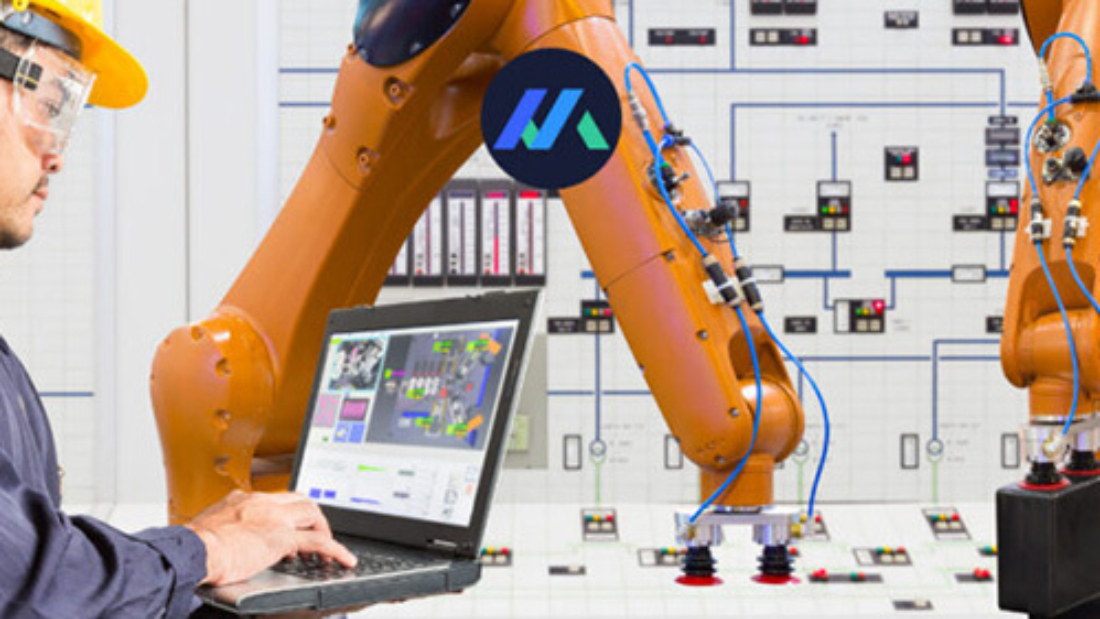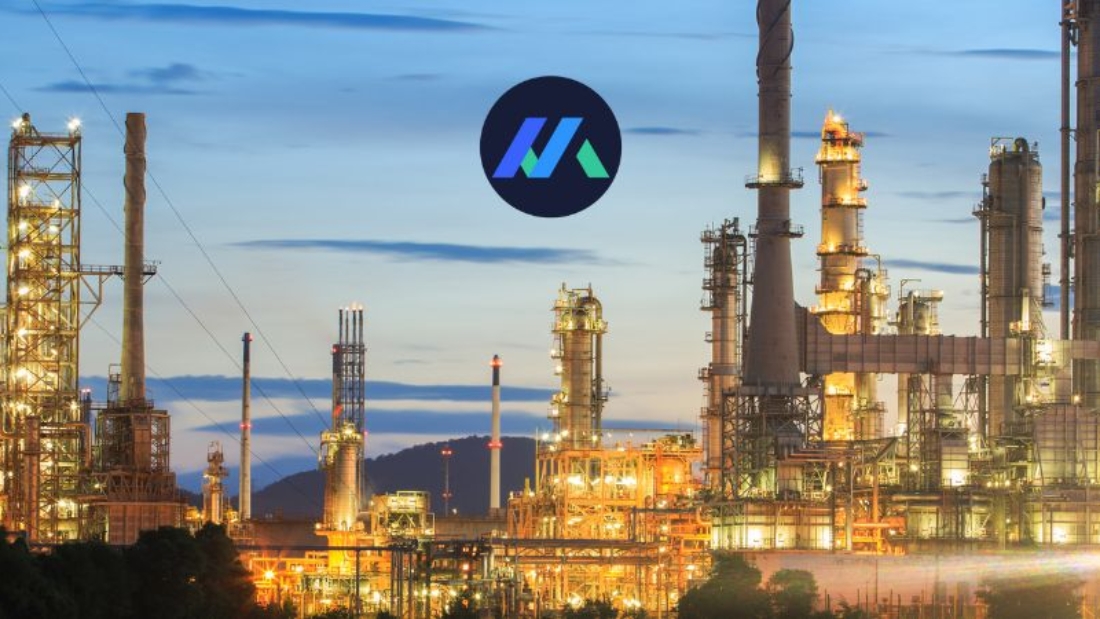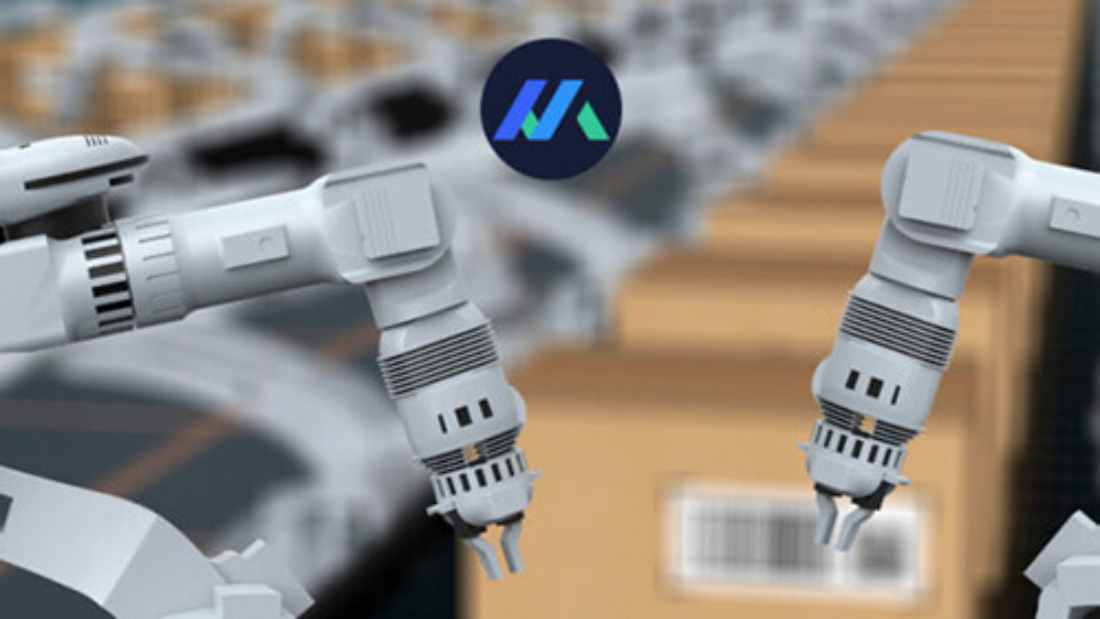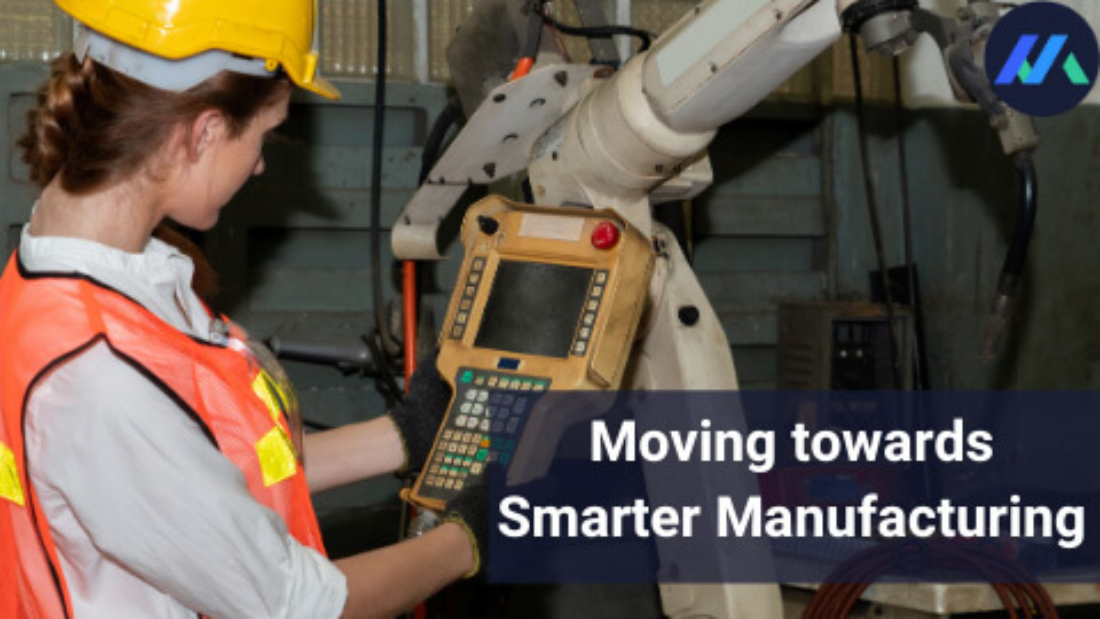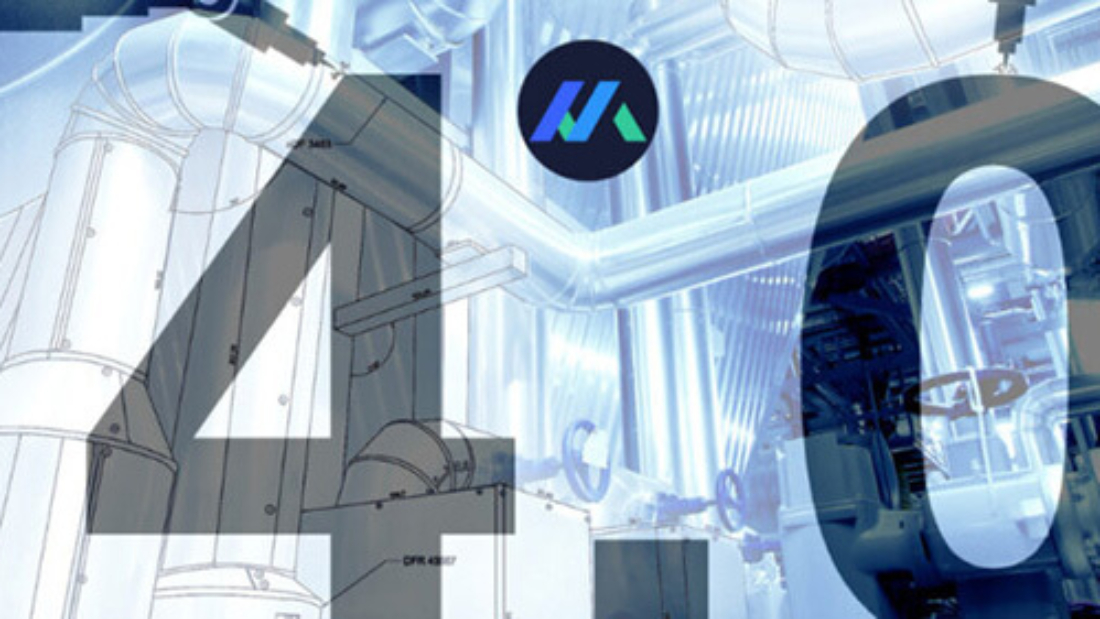Modernization has become more than just a buzzword in manufacturing;…..
Do you trust AI to tell you what to eat and what to wear?
Gartner’s research predicted that people increasingly rely on the outcome of AI solutions. By 2022, 30% of consumers in mature markets will rely on AI to decide what they eat, what they wear or where they live, said the analyst firm.
Augmented Analytics with Makoro™
“Augmented analytics tools will have the biggest impact on enterprises in the long run”, said Jim Hare, a Gartner analyst.
Pandemic & Global Manufacturing Industry
Industry 4.0 is characterized by a connected world. But Covid was a rude awakening – when manufacturers and asset owners/operators discovered the truth about their not-so-nimble operations and not-so-connected supply networks,
Covid intensified market developments that were already underway, although hesitantly.
Globally, we are now seeing a more intense focus on “connected” supply chains. Manufacturers have expanded on the idea of just-in-time production and are now more flexible in their adoption of “agility” in order to respond to market fluctuations, trade policy adjustments, and natural disasters.
Covid has forced manufacturers to reconsider their rigid operations. How do I strengthen the resilience of my supply chain? How will I manage a changing workforce? How do I make the transition from a workforce in which 80 to 90% of employees report to work daily to one that allows for remote work? These are the hard questions manufacturers are challenged with.
Additionally, there is a demographic change in ageing employees and the arrival of a new generation of workers, and manufacturers are attempting to retain the tribal knowledge before it is too late.
Moreover, they are attempting to attract and retain talent by transitioning from analog to digital manufacturing.
What function do artificial intelligence and advanced analytics play in all of this?
Around 15 years ago, the industry asked, “How do we extract more market value from what we’re doing?” Data and networking were instrumental in this initiative. We needed to tie everything together in order to extract the data.
Now we have an abundance of data that we frequently don’t know what to do with, resulting in data paralysis. More than 75-80% of the data that is stashed away is never analyzed.
That is where an artificial intelligence-enabled solution such as Makoro™ comes in.
Manufacturers use Makoro™ to derive insights and recommendations to improve the performance of its products across multiple geographic locations and to fuel newer, servitization-based business models. Owners and operators use Makoro™ to derive predictions, insights. These recommendations are necessary to build intelligent operations and/or manage asset fleets more efficiently.
With Makoro™, recommendations and insights automatically reach the intended workforce personas based on their role and job responsibilities, and become actionable immediately, without the need for data scientists to interpret the results.
This is transformative – data does not travel, and reports and dashboards do not need to be shared. Recommendations/prescriptions travel and automatically become part of your “golden” playbook to build intelligent operations.
Makoro™ builds on Industry 4.0’s networking and data while focusing on augmenting the experience for the Workforce of Tomorrow (WoT). Thereby extending the definition of Industry 4.0 to the workforce and the environment.
Makoro™’s always-on, secure and scalable asset performance solution powered by #AppliedArtificialIntelligence and #PredictiveRecommendations gives you the edge in the fast-paced #Industry40 and drives frontline adoption.
Sign up for the Makoro™ 10-Day Outcome Challenge and see the results yourself.
Challenges facing Oil and Gas in attracting younger talent
Based on my interest in the future of workforce in #smartmanufacturing:
It is harder for oil and gas companies to lure a younger generation workforce which prefer greener, innovative workplaces thereby making an impact on the world through their work. So they are bringing technology to the forefront to attract this talent.
The rising demand for connected workers
Globally, the market for connected worker solutions is predicted to expand at a high pace, owing to growing concerns about employee safety and increased throughput. Connected worker solutions are used in a wide variety of industry verticals, with manufacturing serving as a specialization.
Digitalization, productivity enhancement, and industry 4.0 have all been vital growth indicators.
The digitalization of the supply chain and the integration of connected worker solutions within the plant are ensuring the market’s potential growth. IIoT (Industrial Internet of Things) deployment for the purpose of enhancing plant productivity and ensuring employee well-being is expected to fuel market expansion over the forecast period.
The global market for connected worker solutions is expected to expand at a CAGR of around 23% between 2020 and 2030.
What Are the Advantages of Using Smart Wearables in Manufacturing?
Smart wearables consist of intelligent headgear that delivers intelligent solutions, such as determining when to replace the helmet and its state of repair. Additionally, smart glasses that enhance visibility and enable real-time troubleshooting are just a few of the advantages of smart wearables over conventional ones.
For example, the healthcare industry makes extensive use of wearables such as the Fit Bit to record and track patients’ chronic diseases, alerting both the patient and caregiver to concerning trends.
Similarly, CBT’s wearable computing headset can be worn with conventional headgear such as a ball cap or a basic headband. This device is intelligent due to its IoT capabilities; it does not have any extra attachments. Additionally, this device responds to basic voice instructions, making it more user-friendly. These elements contribute significantly to the enormous benefits of smart wearables in connected workforce solutions.
What Role Do Connected Worker Solutions Play in the Evolution of Smart Manufacturing Practices?
The implementation of computer-integrated manufacturing with rapid design modifications and higher adaptability, as well as the digitalization of the manufacturing process with more agile personnel training, constitutes smart manufacturing practice. To summarise, the smart manufacturing environment is comprised of automation, real-time monitoring, and networked, and real-time data & analytics.
These manufacturing methods lay the groundwork for the integration of connected worker solutions into industrial processes. Industrial activities benefit from connected worker solutions that provide a consistent experience of competency and floor management in real-time, leveraging critical statistical data from business software.
Smart manufacturing methods are already being implemented in a variety of industries, and the combination of smart manufacturing practices and connected worker solutions is positioned to generate significant growth potential for the market in the future years.
What Impact Will IT/OT Convergence Have on Demand for Connected Worker Solutions?
IT is an acronym for information technology, while OT is an acronym for operational technology. The next section discusses how the convergence of these two technologies would affect demand for connected worker solutions.
The integration of manufacturing processes, regulating processes, and physical occurrences with back-end software and hardware for processing and evaluating the acquired data is referred to as IT/OT convergence. Due to widespread wireless Internet connectivity, the convergence point between these two technologies has gotten very near over the years. Convergence of IT and operations technology creates an enormous opportunity for manufacturing processes by combining IT capabilities with operational technology components and by structuring direct machine-to-machine learning with centralized servers, which has altered the overall dynamics of manufacturing processes.
Convergence has now created value for connected worker solutions that provide unmatched real-time visibility and a complete understanding of production processes, affecting the overall market. As a result of enhanced convergence, connected worker solutions are expected to grow at an exponential rate during the projection period.
What Impact Will Efficient IIoT Deployment Have on Connected Worker Solutions?
The Industrial Internet of Things is accelerating the adoption of modern technology in manufacturing processes. The Industrial Internet of Things is wreaking havoc throughout manufacturing industries and changing current industrial processes. This, in turn, is certain to restructure nearly every area of manufacturing, from the way items are researched, planned, fabricated, produced, disseminated, and consumed to the way manufacturing supply chains, and factory floors operate.
The IIoT enables the convergence of IT and OT, which is a critical part of connected worker solutions. Consumers have long desired this implementation, which enables the user to leverage an IIoT platform to accumulate massive data via machine-worker interactions. This mobilization aids in the prevention of safety issues by predictive analytics, ultimately increasing staff productivity and safety.
Additionally, IIoT provides consumers with intelligent computing. Cognitive computing is the process of using computer models to simulate human thought processes in puzzling situations characterized by ambiguous and tentative responses. North Star Bluescope has teamed with IBM to develop a cognitive computing platform that integrates with IBM’s Watson Internet of Things platform to assist personnel in dangerous areas where their lives may be at risk.
Applicability of Connected Worker Solutions
The United States has a history of early technological acceptance and utilization, including digitalization of supply chains and mobilization of advanced technologies such as 5G and electric car infrastructure.
The extensive use of connected worker solutions in the automotive and oil & gas industries has been the primary driver of the market’s clear expansion in the country. Additionally, with a majority of firms such as Honeywell, Oracle, and Intel headquartered in the United States, the implementation of connected worker solutions across a variety of industrial applications is positioned to create enormous opportunities in the short-medium term.
Effects on a variety of industries
Mobile devices/tabs are configured to expand most of the hardware. This expansion is aided by the simplicity with which mobile devices can be used and their compatibility.
Mobile devices and tablets are also likely to see an increase in popularity as a result of BYOD (bring your own device) usage. Additionally, mobile devices assist in supplying an employee with up-to-date analytics, ensuring the employee’s safety.
The oil and gas business is undergoing transformational changes on a scale never seen before. With uncertainties over industrial output and opposition from environmentalists, the market faces significant headwinds. However, the oil and gas business has a greater adoption of connected worker solutions.
This industry requires workers to evaluate and harness available data in order to make timely and correct important judgments. These characteristics contribute to the efficient and comprehensive adoption of connected worker solutions.
Connected worker solutions are applicable to both small and large businesses. However, there is a sizable market for huge organizations. This is because major firms have ample finances available to invest in sophisticated technologies.
Small and medium-sized businesses account for a smaller portion of the market because deploying connected worker solutions inside the industry is not cost-effective. The cost of solution deployment may burn a hole in the company’s wallet, a factor limiting widespread adoption.
Natural language recommendations from Makoro™ augment your workforce, so you can capture tribal knowledge, rapidly onboard new employees, and enable them to be productive from day one.
How Predictive Recommendations Help Oil And Gas Industries
Over the last 20 years, the predictive recommendation has been frequently used in the oil and gas sector. Operators might think about using advanced analytics, which combines engineering, data science, and computational power to help firms anticipate yields or maximize industry assets, to help optimize output. The oil and gas sector continues to confront significant obstacles, such as the expense of maintaining its outdated infrastructure. An estimated $6.6 billion per year is lost by refiners in the United States owing to unscheduled downtimes. The industry has difficulty deriving end-to-end insights from the data it collects. An astounding 95 % of the data is never used because hand-crafted analytics are too slow and do not scale.
Numerous businesses already proclaim to help engineers and data scientists with various facets of their jobs, such as equipment predictive recommendation, supply and demand forecasting, and streamlining standard procedures. Progress has also been hindered by the dependence on conventional analytics methodologies and a legacy computing infrastructure that lacks the necessary processing capacity to evaluate the amount and diversity of data quickly enough. To extract these seas of data, provide insights, and preserve efficiency, oil and gas data requires secure, always-on, and highly scalable analytics and this is where MakoroTM plays extremely well.
By embracing a cloud-plus-edge deployment model and predictive-analytics-at-the-core architecture, businesses using MakoroTM combines the strength of engineering, data science, and AI to realize a range of advantages in the face of disruption.
1) Reduced costs of maintenance and repairs
2) Increased workforce utilization and safety
3) Increased savings in costs of operations
Three critical processes in the Oil & Gas industry are upstream, midstream & downstream.
Upstream:
In the Upstream process, the firms are engaged in the exploration and production of oil and gas. These are the companies that scour the globe for deposits of raw resources and then drill to obtain them. This process is characterized by significant risks, high investment capital, a longer duration due to the time required to identify and drill, and technologically complex nature.
Once a well has been dug, operations are required to generate and sustain its output throughout time. Well, servicing includes tasks such as logging, cementing, casing, perforating, fracturing, and maintenance. Therefore, oil drilling and oil maintenance are two distinct commercial operations within the oil and gas sector.
Drilling is expensive even if the best location is found. Equipment downtime further will raise the price. Unplanned downtime costs offshore oil and gas corporations $49 million each year, a sum made worse by aging equipment and financial constraints.
Wasted production time erodes profits in addition to equipment maintenance and physical labor. If vital equipment fails, there are safety risks and possibly fatal consequences.
Companies that adopt Makoro™ will see a reduction in equipment failure and maintenance costs. Asset and maintenance recommendations based on Makoro’s continuous intelligence combine data from machines, upstream processes, and rigs to allow operations personnel to understand risks in real-time, anticipating and minimizing field concerns.
Midstream:
In process those primary concentration is storage, transportation & processing. Companies are responsible for transporting extracted raw materials to oil and gas refineries for processing. Shipping, trucks, pipelines, and the storage of raw materials define the midstream process.
From a distance, midstream may look more basic than oil mining or drilling, but in fact, midstream transportation movements are significantly more complex than they appear. Organizing the storage and distribution of fuel supplies requires adherence to stringent safety rules and several levels of bureaucracy and government restrictions.
The midstream faces unique challenges. Not only must companies gather hydrocarbons from upstream producers, but they may also operate processing facilities to “sweeten” the gas and remove impurities. The core challenge is to distribute products to customers via pipelines and storage facilities while keeping close track of how much product is flowing to customers.
Visibility and centralization of data in the supply chain are crucial to resiliency and agility. Considering that midstream transport is the link between oil production and distribution, the efficacy of fuel transportation is crucial to the performance of the whole supply chain. Transparency and speed are essential for a successful transportation strategy, which is why midstream firms must deploy AI-based digital solutions like Makoro™ which can help them to improve and optimize their supply chains. Supply chain insights and recommendations delivered by Makoro™ enable businesses to boost efficiency, get more insight into operations, simplify procedures, achieve compliance, and overcome blind spots related to the supply chain.
Makoro gathers data from multiple sources and feeds it into an AI and Advanced Analytics platform to make recommendations & predictions on risk and how to best allocate spending for compliance and other process optimizations. Natural-language recommendations from Makoro™ are built for the frontline workers so that they can understand and act upon them.
Downstream:
Refineries are the businesses responsible for eliminating impurities and transforming crude oil and natural gas into consumer goods such as gasoline, aviation fuel, heating oil, and asphalt. At gas stations, customers refuel at the pump.
Current refinery scheduling processes use a trial-and-error approach based on the schedulers’ experience. But increasing complexity requires upgrading this logic with machine learning, providing standardized and optimized 30-day scheduling that also offers an agile response to the possibility of processing a specific opportunity crudely.
Existing difficulties arise in the downstream distribution. You may have vehicles with several compartments that convey various sorts of items simultaneously, some of which cannot be put in adjacent compartments owing to safety concerns. Possibly you have on-load vs off-load and weight problems that ultimately relate to safety; if you empty one container before another, the vehicle may become unstable while driving.
By selecting an innovative solution for route and distribution planning, all of these obstacles become obsolete. It is merely a question of planning out the process flows of your firm and collecting data for the forecasting algorithms with the correct SaaS platform like Makoro™.
With the changing nature of the energy production sector, AI delivers substantial value throughout the whole value chain. AI assists oil and gas businesses in determining the value of particular reservoirs, customizing drilling and completion plans based on the geology of the region, and evaluating the hazards associated with each individual well. Additionally, downstream processes may be adjusted to save expenses and enhance margins.
Deep learning and the notion of “Digital Twins” provide tremendous potential advantages for oil and gas predictive maintenance. For instance, the early and accurate detection of faults, the prediction of the remaining useful life of an asset given its operational context, and even the prescribing of work scope guidance for the field service team, including recommendations for the parts and personnel skills necessary to service them.
C-suite executives often question how companies might use AI and deep learning to investigate the predictive maintenance possibilities of the digital twin. The solution is obvious: Engage immediately. Now that the technology is available, it is time to embrace an AI-first mentality. Commence a discussion on how to effectively expand your business capabilities utilizing the appropriate technologies and infrastructure.
How can MakoroTM assist?
Asset management, including its monitoring and maintenance, project planning, and lifecycle management, is one of the most significant areas where Makoro™’s digital twin (DT) technology may play a vital role. Makoro™ Recommendations Dashboard highlights the business value delivered by MakoroTM to operations in real-time, MakoroTM utilizes the customer’s current infrastructure (cloud, on-premise, or hybrid) and communicates with the customer’s existing private/public/hybrid cloud, on-premise, and edge systems without friction.
Makoro™ helps oil and gas businesses to overcome production imbalances, sudden changes in global economic circumstances, and equipment dependability difficulties in such a situation. Makoro™ optimizes supply chain processes by providing continuous insights and recommendations through Makoro™ Mind, the data-driven core that leverages IoT, Digital Twin, Artificial Intelligence, and Advanced Analytics to make operational recommendations.
Four ways asset OEMs, owners & operators can remove roadblocks to delivering intelligence
This and the last year has been eventful for all sectors, but the pandemic has been particularly devastating for the manufacturing sector, which relies on the delicate balancing of supply chains to work effectively. As one of the first industries to adopt robotics, automation, and IoT, the sector has a long history of technological advancement. Manufacturers have access to an enormous amount of data.
But less than 11% of the data is used to drive business decisions.
IDC survey found several impediments to companies extracting value from their data.
The fundamental one is the lack of integration of the technology infrastructure. For instance, although the growth of IoT devices at the edge of manufacturers’ data networks has been rapid, these devices are disconnected from manufacturers’ headquarters system. Data collection points are dispersed and uncoordinated, making it hard to use data to achieve desired business outcomes such as increasing throughput. Furthermore, this still leaves Information and Operations leaders driving siloed decision making.
Deriving intelligence from data is another roadblock. Manufacturing lags behind other sectors in terms of multi-cloud and hybrid cloud adoption, and the sector also has a lower likelihood of having a central data centre. As a result, data is either discarded rather than being backed up for long-term storage or stored in long-term storage but never analyzed. Managing the storage of collected data and deriving intelligence out of it in a timely manner to drive business decision making is the second most significant problem, behind making the data available.
Ageing infrastructure is often the cause of the slowdown. For instance, data management may find it challenging to incorporate the latest sensor varieties on various factory machines. Or, the ageing infrastructure may not be capable of handling the volume of connected assets entering the facility. As a result, plants often use ad-hoc processes to link and manage assets in the absence of an underlying infrastructure that enables comprehensive management.
Additionally, a skills shortage exists. Manufacturers are confronted with an ageing workforce and a shortage of qualified workers willing to work on the shop floor. Due to the scarcity of new talent, manufacturers can only invest in upskilling current employees – which is not a bad thing on the surface but is not a long-term plan on its own. If skilled workers are the future of manufacturing, a dearth of sufficient skills is one of the most difficult obstacles to overcome.
Makoro™ alleviates these barriers to adoption.
- Makoro™ has an open architecture and can be deployed in any configuration. It can be on a fully managed Makoro™ Cloud (managed by us) or in your infrastructure in a BYOI (Bring your own Infrastructure) model or in any cloud and edge configuration.
- Makoro™ can work with a wide variety of assets and IT and OT systems. If the system has data in any form, Makoro™ can tap into that data to demonstrate value. You do not have to “big-bang” upgrade your current assets and/or infrastructure.
- Once deployed and connected to your assets and OT and IT systems, Makoro™ continuously delivers intelligence based on your data, so your data is not just stashed away without analysis.
- Natural language recommendations from Makoro™ augment your workforce. It can capture tribal knowledge, rapidly onboard new employees and enable them to be productive from day one.
#MakoroAI applies the power of #RecommendationEconomy to #SmartManufacturing, augmenting decisions related to the management of critical assets, so you can manage assets more efficiently with a lower total cost of ownership.
Ignoring the intelligence that your data could provide means passing up opportunities to expand, innovate, and boost your bottom line. Investing in intelligent operations will always have a transformative return on investment, but you need to start somewhere and start soon enough.
It is time to start collecting data and deriving intelligence. All in a single thread, and not as separate stages of the project. And then repeat this thread as frequently as you can.
Sign up for our 10-day challenge to see how Makoro™ can benefit your business.
Moving towards Smarter Manufacturing
The term “Industry 4.0” is often used interchangeably with “Smart Manufacturing.” Despite widespread public confusion and initial business reservations about Industry 4.0, the benefits appear to be very promising. It is expected that over the next five years, an AI system will be able to run computers autonomously.
Additionally, AI benefits businesses by improving operating efficiency. It can further shorten time to market and reduce factory safety incidents. By connecting business data end-to-end, from supply chains to manufacturing, delivery, and use, AI will alert employees to both possible challenges and opportunities.
The first step in Implementing Smart Manufacturing in real scenarios is to collect data from a variety of structured and unstructured sources. It could be from IoT and IIoT systems, HMIs, PLCs, ERP, and CRM systems, as well as manual data records. Integrating data on raw materials, processing, manufacturing, shipping, distribution, and transportation all the way down to the customer level adds increasing value across the entire manufacturing supply chain.
But data collection and aggregation is the first step. The real value is realized by what businesses do with the data. Some go down the path of data visualization to understand data better. But advanced AI systems like #MakoroAI aggregate, correlate, and analyze this data in order to make recommendations that directly impact business outcomes and drive workforce adoption.
Makoro™’s always-on, secure and scalable asset performance solution. It is powered by #AppliedArtificialIntelligence and #PredictiveRecommendations gives you the edge in the fast paced #Industry40. Thereby reducing the downtime and maintenance costs.
Sign up for the Makoro™ 10-Day Outcome Challenge and see the results yourself.
Why Industry 4.0 Adoption Has a Significant Upside
When manufacturing began to embrace digital technology a decade ago, it acquired a new term: smart manufacturing, or Industry 4.0. By incorporating cloud, automation, advanced analytics, machine learning, and big data into manufacturing and supply chain management operations, a connected ecosystem for manufacturing and supply chain management was created, which grew into a market that is experiencing rapid growth. In Jan’20, the sector was poised to double in size to more than $300 billion over the next five years.
Then came the pandemic. By early spring, millions of workers had been laid off. Several plants halted production temporarily or reduced output to allow workers to spread out and maintain a safe distance from one another. Investment in smart manufacturing also decreased by 16%. According to some researchers, such a pullback would dampen investment through 2025.
However, manufacturing executives and service providers indicate that investment in smart manufacturing will accelerate. It is more than $400 billion by 2025. This is because Industry 4.0 technologies improve operational efficiency, strengthen supply chains, and enable a more personalized customer experience and the potential for data-driven top-line growth.
Before COVID-19 impacted the manufacturing and delivery processes for every conceivable product, some businesses had already begun a digital transformation.
For instance, the automotive industry has already embraced new business models in order to address strategic imperatives such as connected and electric vehicles, as well as automated and shared solutions. The pandemic provided additional impetus for businesses to rethink their digital strategy, accelerate their migration to these technologies, and reduce their reliance on specific locations, thereby increasing their operational resilience.
As a result, supply chains in manufacturing have become increasingly complex and integrated. The Demand for more efficient equipment and increased manufacturing yield has increased significantly. Enterprises are now leveraging applied analytics to predict and mitigate operational disruptions within and across plants and the supply chain.
Instruments of the New Age
Businesses are increasingly using digital twins. AR & VR technologies are being used in a variety of applications, most notably for equipment maintenance and employee training in manufacturing plants. 4G, LTE, and 5G networks are being established to support low-latency communications required for machine-to-machine communication and edge computing within plants. Cybersecurity, cloud computing, and the IoT are also gaining traction.
At the same time, cybersecurity is increasingly becoming a challenge that is getting a lot of attention. We’ve already seen numerous instances of hackers attempting to penetrate manufacturing sites, such as the malware attacks that brought a pure-play semiconductor company to a halt. The number of IoT devices could triple to tenfold its current level. And each device provides a point of entry for hackers. Simultaneously, multinational manufacturers must comply with local regulations.
Smart manufacturing enables more adaptable, customized manufacturing setups, frequently utilizing additive manufacturing solutions to deliver personalized products and enhance the customer experience. At the heart of these capabilities are the digital platforms and backbone: 5G network technology, IoT-related technologies, cloud-based applications, and systems, as well as automation and artificial intelligence, which serve as the foundation for analytics used to optimize manufacturing operations.
Since the lockdown, businesses have figured out how to operate without physically entering the plant. Businesses are shifting their focus to cloud computing, automation, and AI, and advanced analytics. Additionally, they are relocating supply chains closer to their locations and exploring alternative sources for raw materials and components.
However, despite this high level of interest and activity in predictive analytics, the adoption rate is only about 25%. This bodes well for future investment and a stronger recovery post-COVID. By 2025, the growth rate could add an additional 30% in industry 4.0 investment over what was anticipated.
What does this all mean?
One thing is certain: to reap the benefits of smart manufacturing technology, manufacturing companies will require partners who can assist them in implementing and rapidly scaling up the technology. The more providers that can assist manufacturers, owners, and operators in maximizing the value of their investment in digital initiatives, the greater the frontline adoption of these technologies.
How can Makoro™ help?
In order to accelerate deployment, Makoro™ uses a cloud-agnostic model and leverages customer’s infrastructure 100%, and deploys on the edge, in public/private/hybrid cloud, and in customer’s data centers. Makoro™ also optionally deploys on Makoro™ Cloud as a fully managed application suite.
Makoro™ Predictive Asset Performance Management solution continuously and effortlessly gathers and correlates data from the manufacturer’s internal applications, inventory management systems, and maintenance management systems. It generates recommendations for optimizing asset and workforce utilization while lowering overall maintenance costs.
The digital performance twin in Makoro™ Mind uses data from connected devices to construct the asset health and performance model and keeps it updated through periodic re-training. As a result, engineers have a complete view of how the asset is performing through real-time IoT data from the asset itself. The Performance Twin in Makoro™ helps identify potential asset problems, troubleshoot from anywhere. It integrates with Makoro™’s Recommendation System to deliver contextual recommendations to proactively improve asset performance.
And since Makoro™ provides secure access to your plant predictions, insights, and recommendations anytime, anywhere, and from any device, it plays a key role in your remote operations strategy, allowing your operations executives to make better, faster, timely, and consistent decisions about their plant operations remotely.
Schedule a demo to see what Makoro™ can achieve for your business.


